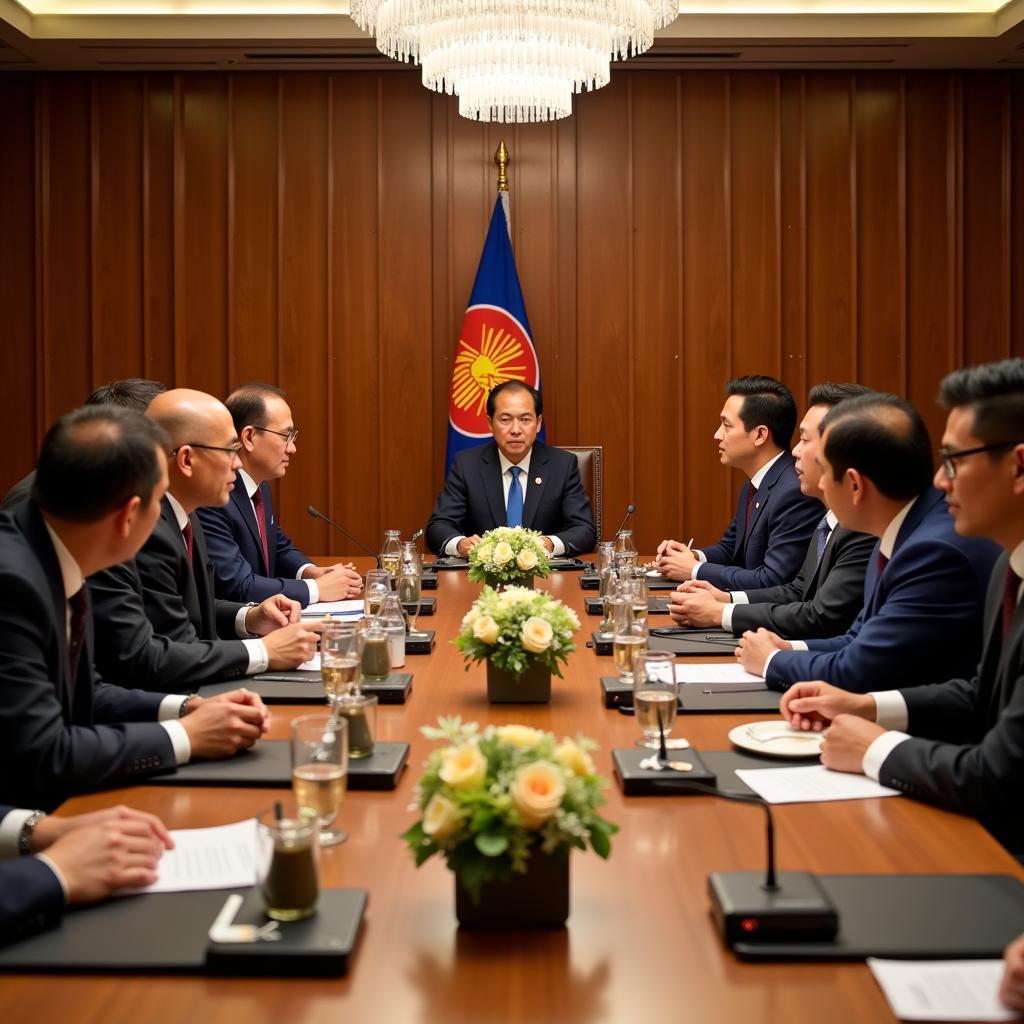The Association of Southeast Asian Nations (ASEAN) plays a pivotal role in the political, economic, and social landscape of Southeast Asia. But Why Was Asean Founded in the first place? This article delves into the historical context, motivations, and key figures behind the establishment of this vital regional organization.
Understanding the genesis of ASEAN requires examining the complex geopolitical climate of Southeast Asia in the mid-20th century. The region was grappling with the aftermath of colonialism, the rise of communism, and internal conflicts. The need for regional stability and cooperation became increasingly apparent. The formation of ASEAN in 1967 was a direct response to these challenges, representing a collective effort to forge a path towards peace and prosperity. You might be interested in reviewing the 31st ASEAN Summit 2017 Dates.
The Cold War and its Influence on ASEAN’s Formation
The Cold War significantly shaped the political landscape of Southeast Asia. The region became a battleground for ideological influence between the United States and the Soviet Union, exacerbating existing tensions and fueling proxy wars. This precarious situation underscored the need for a regional mechanism to manage these conflicts and prevent further escalation. ASEAN’s founders recognized that a unified front would strengthen their collective bargaining power and provide a platform for peaceful dialogue.
The Role of Founding Fathers
Five visionary leaders spearheaded the establishment of ASEAN: Indonesia’s Adam Malik, Malaysia’s Tun Abdul Razak, the Philippines’ Narciso Ramos, Singapore’s S. Rajaratnam, and Thailand’s Thanat Khoman. Their combined diplomatic efforts and shared vision laid the foundation for a regional organization focused on promoting peace, stability, and cooperation. These founding fathers understood that by working together, they could address shared challenges and create a more secure future for their nations.
 ASEAN Founding Fathers: A Historic Gathering
ASEAN Founding Fathers: A Historic Gathering
Beyond Political Stability: Economic and Social Cooperation
While political stability was a primary driver behind ASEAN’s formation, the organization’s scope extended beyond security concerns. The founders recognized the potential for economic growth and social development through regional collaboration. ASEAN aimed to facilitate trade, investment, and cultural exchange among member states, fostering a sense of shared identity and purpose. The ASEAN 2017 Summit Summary highlights the diverse topics discussed.
ASEAN’s Expanding Membership and Evolving Goals
Over the decades, ASEAN has grown from its original five members to ten, encompassing Brunei Darussalam, Cambodia, Laos, Myanmar, and Vietnam. This expansion reflects the organization’s enduring relevance and its ability to adapt to changing regional dynamics. ASEAN’s goals have also evolved to encompass a wider range of issues, including environmental protection, disaster management, and the promotion of human rights. For more insights into agricultural collaboration, you can explore the ASEAN Agriculture Summit 2017 Summary.
 ASEAN Summit: Leaders in Discussion
ASEAN Summit: Leaders in Discussion
Why was ASEAN founded? A Legacy of Cooperation
So, why was ASEAN founded? The answer lies in the convergence of several factors: the need for regional stability amidst Cold War tensions, the desire for economic and social progress, and the shared vision of a unified Southeast Asia. ASEAN’s founders recognized the power of collective action and laid the groundwork for an organization that continues to shape the region’s destiny. The 2017 ASEAN India Summit exemplified this collaborative spirit. Learn more about the 50th ASEAN Summit 2017 Philippines Schedule.
 ASEAN Flag: Symbol of Unity
ASEAN Flag: Symbol of Unity
In conclusion, ASEAN’s founding was a pivotal moment in Southeast Asian history. Driven by the need for stability, cooperation, and progress, the organization has become an indispensable platform for dialogue and collaboration. Why was ASEAN founded? Because its founders believed in a stronger, more unified, and prosperous future for Southeast Asia.
FAQ:
- What does ASEAN stand for? Association of Southeast Asian Nations.
- When was ASEAN founded? August 8, 1967.
- Who are the founding members of ASEAN? Indonesia, Malaysia, the Philippines, Singapore, and Thailand.
- What is the purpose of ASEAN? To promote regional peace, stability, and cooperation.
- How many members does ASEAN have today? Ten.
- Where is the ASEAN Secretariat located? Jakarta, Indonesia.
- What is the ASEAN Charter? The legally binding document that governs ASEAN.
Need more help? Contact us at Phone: 0369020373, Email: [email protected], or visit our office at Thon Ngoc Lien, Hiep Hoa, Bac Giang, Vietnam. We have a 24/7 customer support team.

